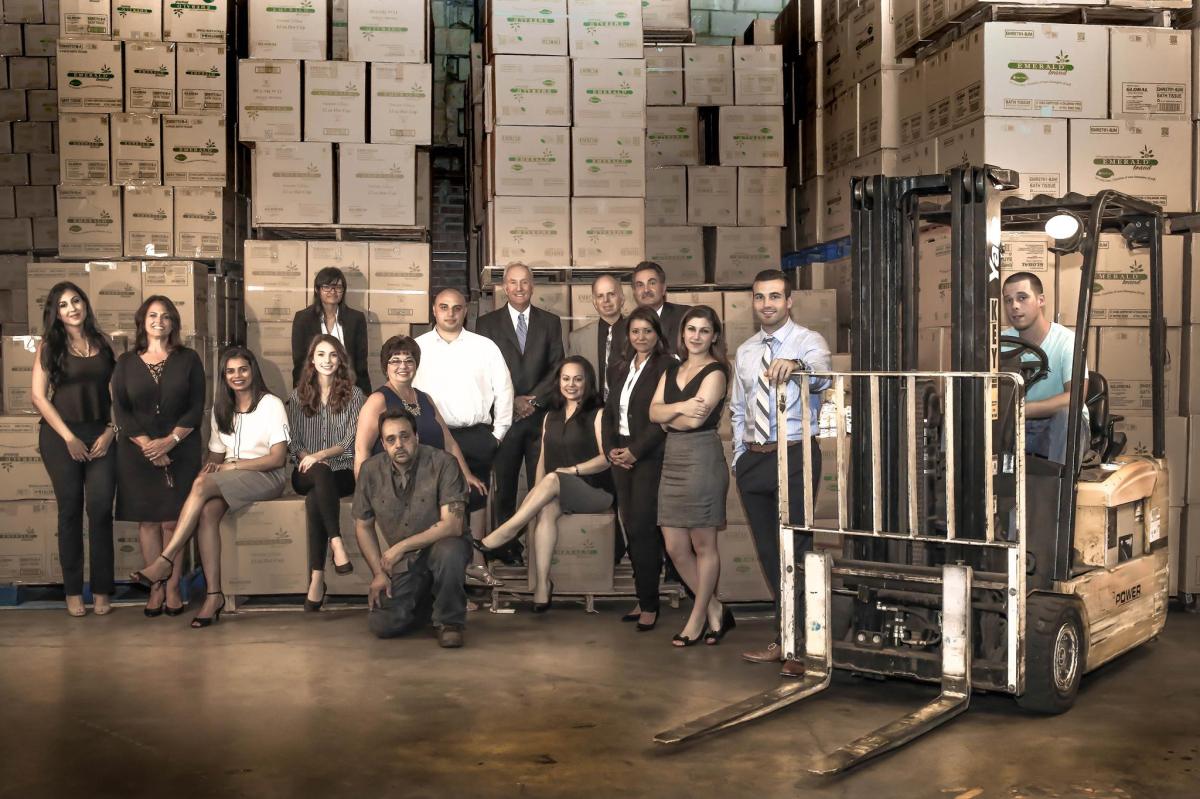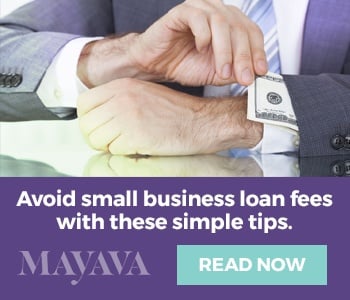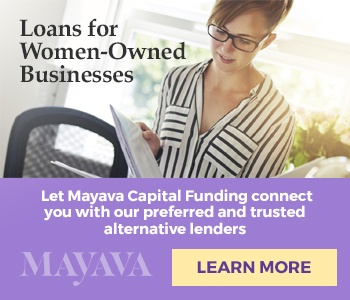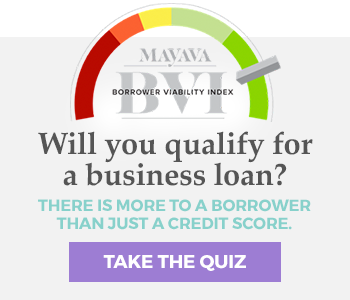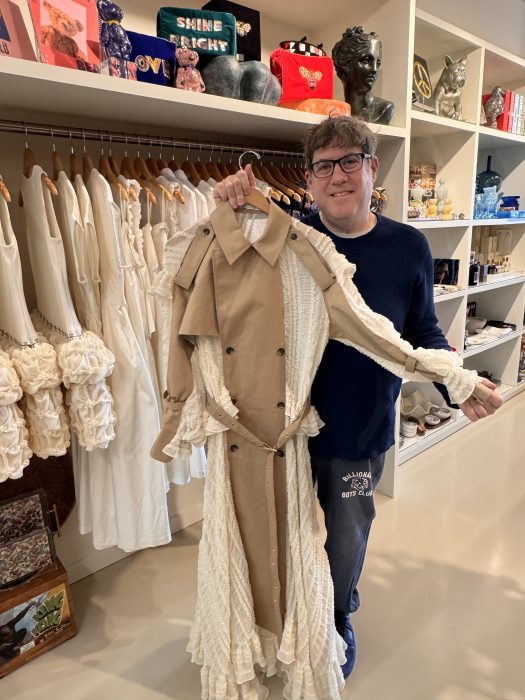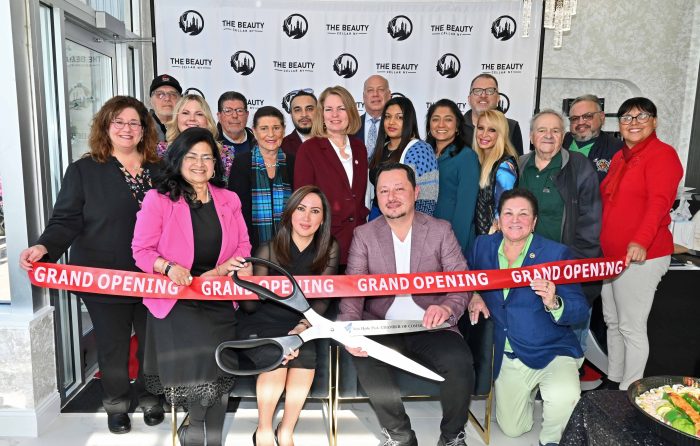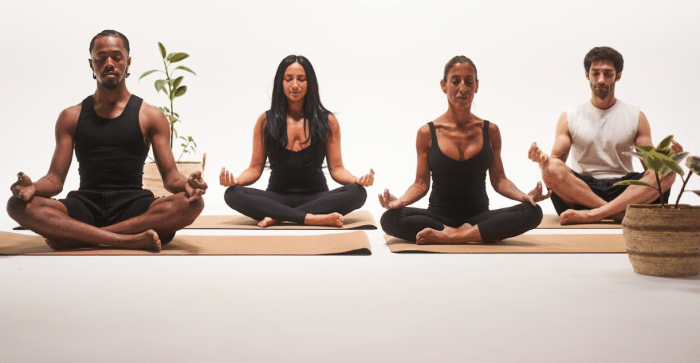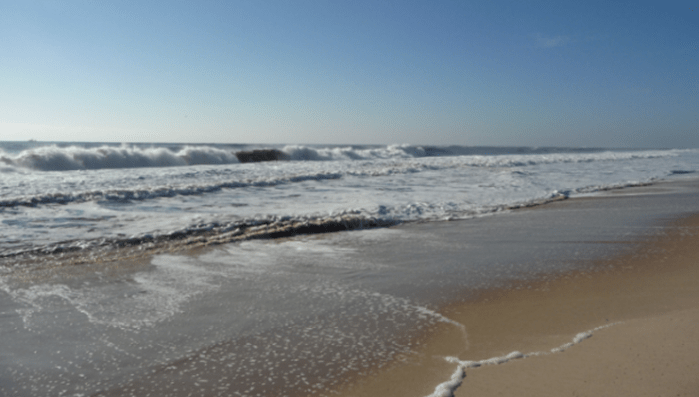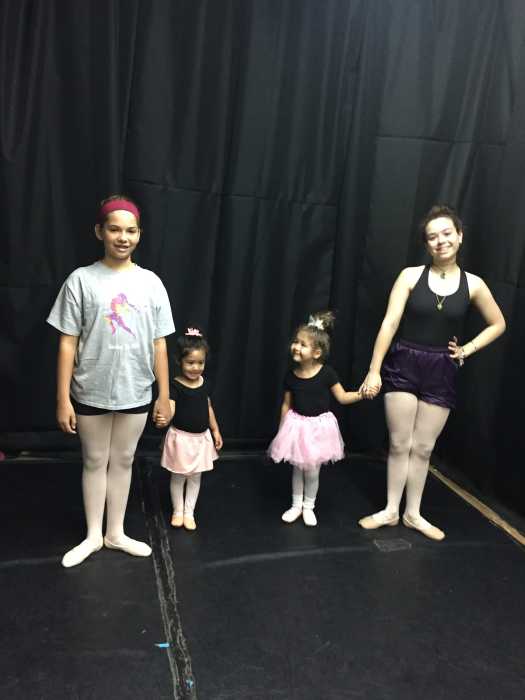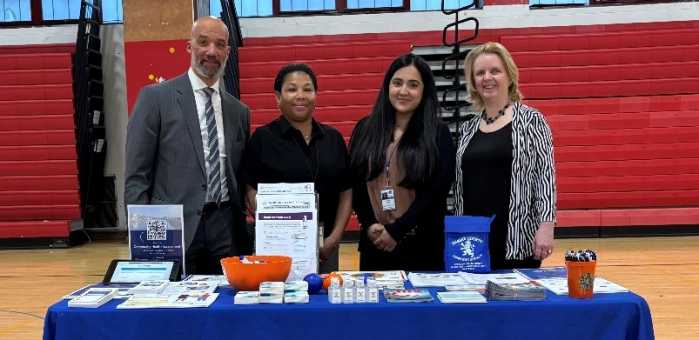Imagine if your empty plastic cup—once full of iced coffee—could just be tossed into a composter. Instead of clogging up a landfill for who knows how long, it’d disintegrate in months. What if that paper plate that came with your slice of pizza was totally compostable? Or your napkin and your bathroom tissue were biodegradable?
Ralph Bianculli has turned these imaginings into reality through a Syosset-based company he founded called Emerald Brand. With two of his kids following in his footsteps—his son Ralph Jr., known as RJ, and his daughter Jaclyn, whose married surname is McDuffey—this family formerly from Floral Park has begun to revolutionize the disposable products industry by providing “sustainable solutions” for businesses, sports facilities, and soon, they hope, consumers everywhere.
Emerald Brand, a subsidiary of Paradigm Group, is a national provider of environmentally responsible products manufactured from rapidly renewable and sustainable materials like sugarcane bagasse (stalks left over after the sugar has been processed), bamboo and eucalyptus. Instead of producing paper from hardwood trees and plastic from petro chemicals, this company wants to use alternative natural substances like polylactic acid (PLA), which is a compound of plant starches. Besides reducing the impact on the waste stream and global warming, Emerald Brand also hopes to help American farmers turn their crops into another source of profit.
“Our model is very interesting,” said Bianculli Sr., who was visiting farmers in upstate New York when he recently spoke with the Press. “Hands down, I think it’s the most innovative piece of what anybody’s done in our industry in 50 years. It’s actually pretty cool. I’m inspired!”
Over the last four years this privately owned company has doubled in size, reportedly earning tens of millions of dollars annually, as its distribution has expanded from four states to 40. It’s also begun to export to the United Kingdom and the Caribbean. Right now, the vast majority of Emerald Brand’s customers are businesses. Their products are in Barclays Center, American Express, and Sachs Fifth Avenue, to name a few venues.
Only a small but growing percentage of the business is retail. The marketing focus has been mainly business-to-business because when decision makers choose what disposable products to buy for their companies’ facilities, the results can be profound, the Bianculli siblings believe.
“They say, ‘Okay, we’re going to go with Emerald because we want to have an environmental impact that’s positive,’” explained McDuffey, 25, managing director of Emerald Brand, speaking at her company’s headquarters in an industrial park off Jericho Turnpike. “The next day they’re able to just turn it on, and 10,000 to 20,000 people in their buildings are all switching over. You’re able to make a difference very quickly in the B2B world versus the consumer world, where you have to get every single consumer every single time they buy to think of you.”
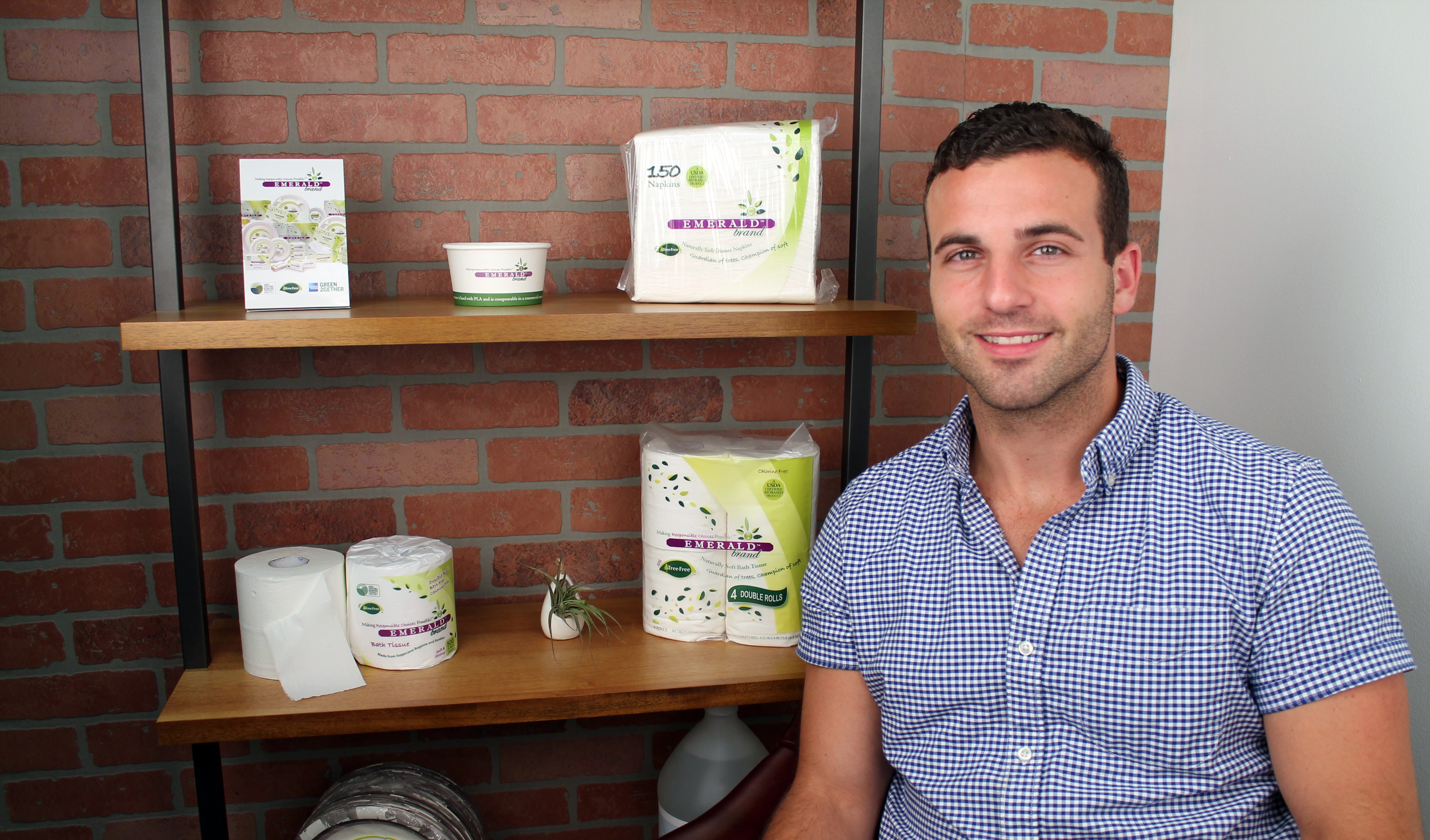
Emerald Brand has taken that route, too, after spending millions of dollars and at least five years on research to develop prototypes that they could eventually bring to market. In 2008, Emerald Brand partnered with Duane Reade for two years when it launched a private label called Apartment 5. The Biancullis were supplying bath and facial tissue, dinner napkins and paper towels to the pharmacy chain.
“This was the first alternative tissue material brought to market. It sold off the shelves,” said RJ, 27, managing director of sales. “It was the fastest, highest-selling tissue product at the time.”
After that trial run, the family was even more determined to roll out Emerald Brand as “a total environmental portfolio,” explained RJ. They haven’t stopped there, either.
Last year, Emerald Brand announced that it had formed a strategic partnership with Totally Green, a U.S.-based manufacturer of the ORCA Anaerobic Aerobic digestion machine, which significantly cuts down on the food-waste stream. The move came in response to the passage of New York City law 1162-A, which took effect in July 2015 and mandated that food facilities at manufacturers, stadiums, large cafeterias and hotels with more than 60 rooms could no longer simply throw away their organic food waste. Instead, they had to either compost the waste or use an onsite anaerobic digester. Using Emerald Brand’s sustainable disposable products has helped the companies meet the new strict compliance standards more cost-effectively and efficiently. According to PlaNYC, food waste comprises 30 percent of the four million tons of waste that New York City was annually sending to landfills.
“When waste normally goes into the landfills, it ends up producing methane gas and other global warming gas byproducts,” said RJ. Bio-digesting machines can take up to 100 pounds an hour of food waste and turn it into water.
THE INSPIRATION
It took something painfully personal to compel the Paradigm Group to make the shift from the mainstream to launch the Emerald Brand.
Bianculli had come from a large traditional distribution company that handled styrofoam cups and plates, corrugated packing materials and other items. During his career, he’d worked with Georgia Pacific and Unisys. But things changed for the family when John Paul Bianculli was born in 1994. At first, he was a healthy baby, but at 2 months old, “John-John,” as his siblings call him, started having seizures, sometimes up to 300 a day.
“I remember going to the hospital quite often,” recalled McDuffey. At the time she was 4, her older brother was 6.
“We found out that he had gotten mercury poisoning from one of the vaccinations,” said RJ. The level of mercury in the infant’s brain was eight to 10 times above normal. Now 22 years old, John Paul needs full-time care, because his grand mal seizures can be severely debilitating. The young man can neither walk nor speak. “He knows us as a familiar face,” said RJ, “but he’s very, very attached to our mother, Pam.”
The family never sued the vaccination maker. “Our parents never wanted to go down that road,” said McDuffey. Instead, they devoted themselves to finding out what had triggered the malady and what could be done about it.
After investigating the pharmaceutical industry, the elder Bianculli said it was “quite disappointing” to find out how much was already known about the potential harm that some of the materials posed to human health. He looked at his own industry and saw “how inherently wrong” things were there, too. The recognition inspired him.
“It just moved us along to where I said, ‘There’s got to be a better way to do the things that we know,’ recalled Bianculli. “I’m not a doctor. I’m not a scientist. But I know the paper and plastics industry, and it was the single-biggest moment in my life when I said, ‘If I could do something in this industry and make a difference, then you know what? It’s worth it.’”
With admiration RJ calls his father “a visionary” because he looked “into what we are making our products from. What are we bleaching our products with? What are the substances that we are touching our mouths, our rear ends, and our faces with every day?”
As a result, RJ said that his dad became “very passionate about this whole movement, not only from an environmental perspective, but from a health perspective… He came up with the idea to create a line of products that were healthier and more sustainable, and that were going to be the same or better price and quality than the traditional, fossil-fuel-based plastic products and tree-based products.”
“We were way ahead of the curve,” Bianculli said, proudly.
The original name of the parent company was Paradigm Marketing Consortium, now Paradigm Group, which officially gave birth to its disposable products subsidiary, Emerald Brand, in 1997. They picked that name because “It means green without saying it’s green—kind of clever!” explained McDuffey with a smile.
“But it was something the consumer could relate to,” added her brother. Emerald started with four recycled products. Now the brand includes more than 225 separate stock keeping units (SKUs), from soup cups to paper towels and garbage liners. The company acts as a wholesaler, a manufacturer, and a distributor, depending on the market. Besides its Syosset headquarters, it’s got a distribution center in Hayward, Calif., and is about to open one in central Florida. According to RJ, about 50 percent of the production of their finished products is done here in the United States. “Upwards of 30 to 40 SKUs are made here in New York,” he said.
Clearly, they’ve come a long way.
“Our first stage was to try to bring purity to the disposable world,” said Bianculli. “Our mission is to totally transition the way people perceive paper and plastics in the consumables world.”
The elder Bianculli compares what Emerald Brand is doing now to “What the revolution was on smoking. We’re up against big industry,” he said. But he believes that his team can convince the “titans of industry to really start looking at these alternatives. It’s not all about the money. It’s about changing the way industry treats the consumers in this country.”
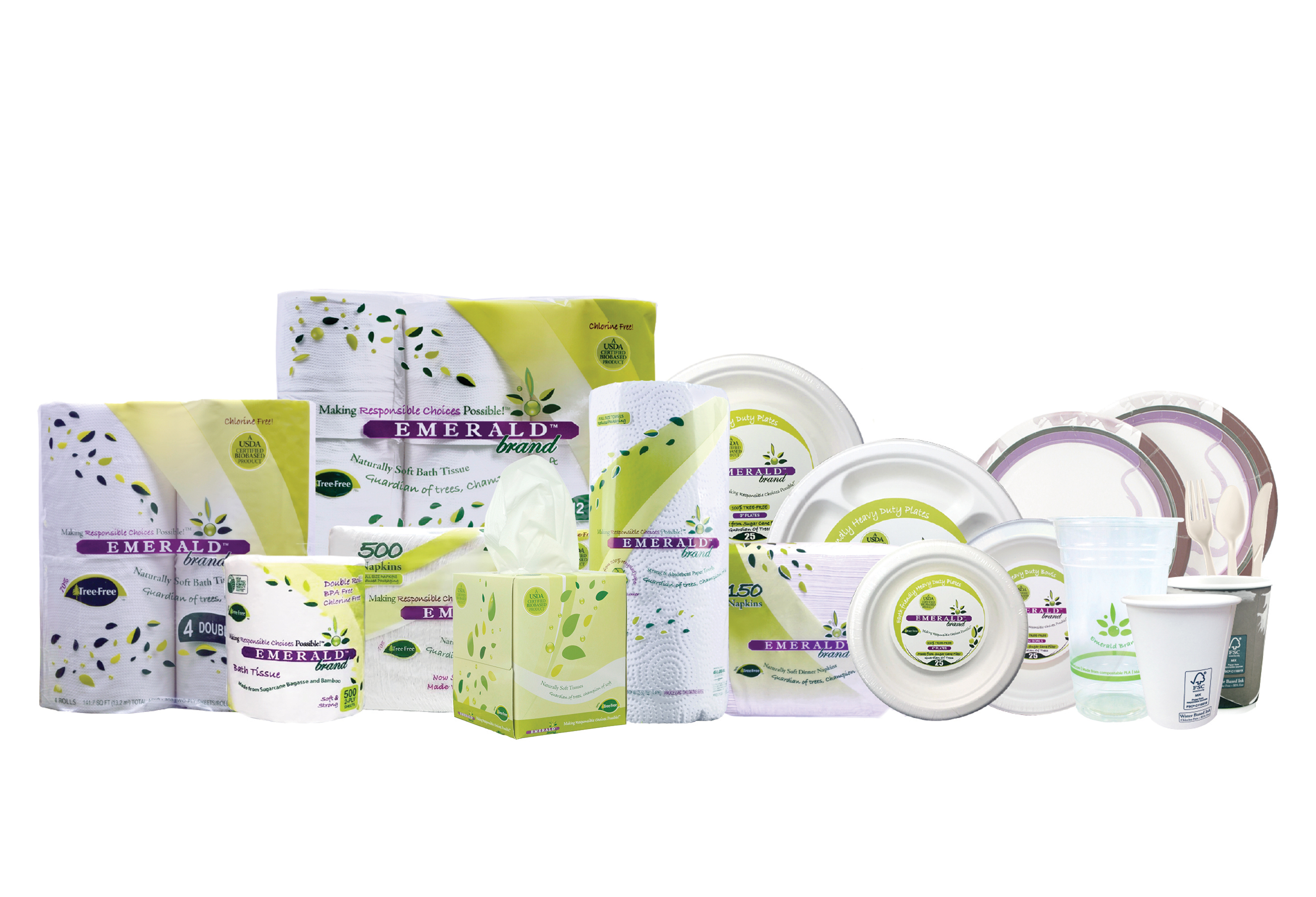
His daughter explained the company’s research.
“We don’t just work with bagasse,” McDuffey explained. “We really look at any material that is rapidly renewable, safe for the environment, easy to grow, and doesn’t utilize trees. So we’re always looking for alternative fibers.”
Sugarcane is prevalent in the Southeast, like Florida, but now the company is trying to find crops that can be grown in the Northeast. For about a year and a half, she said Emerald Brand has been working with researchers at Cold Spring Harbor Laboratory to study fruits and vegetables like tomatoes and corn that might have the properties they’re looking for. And finding the right crop also fits in with their goal to help American farmers.
When the Press recently caught up with Bianculli Sr., he was on the road upstate, looking at farmland in the Saratoga Springs area, and planning to meet with local farmers. The company has come up with at least four other crops that might work just as well as bagasse in supplying plant starches for their product line.
“I believe that in a year from now we will have that solution,” said Bianculli. “We’ve got the ear of a lot of folks in the farmlands. So it’s my mission now to try to put that piece of the puzzle together.”
Meanwhile, back on Long Island, RJ was planning to fly down to Florida and speak at the Sierra Club’s Big Sugar Summit #2 on Aug. 20 in West Palm Beach, where he intended to explain Emerald Brand’s benefits. Under current practices, the vast majority of sugarcane farmers burn the discarded bagasse, which yields methane gas, a contributor to global warming.
“Burning this cane is a big issue,” RJ said, “and we happen to have the solution. We buy the material from these farmers. It’s an added source of income and gives them an incentive not to burn it.”
As RJ sees it, if Emerald Brand can help farmers while reducing the impact that disposable products have on the environment, it’s a win-win for the company, and the planet.
“It’s a mission for us,” said RJ, with a determined smile as his sister nodded in agreement. “It’s not about the dollars and cents. We have a lot of passion behind it, and I think we’re here to stay and we’ll continue to grow.”




